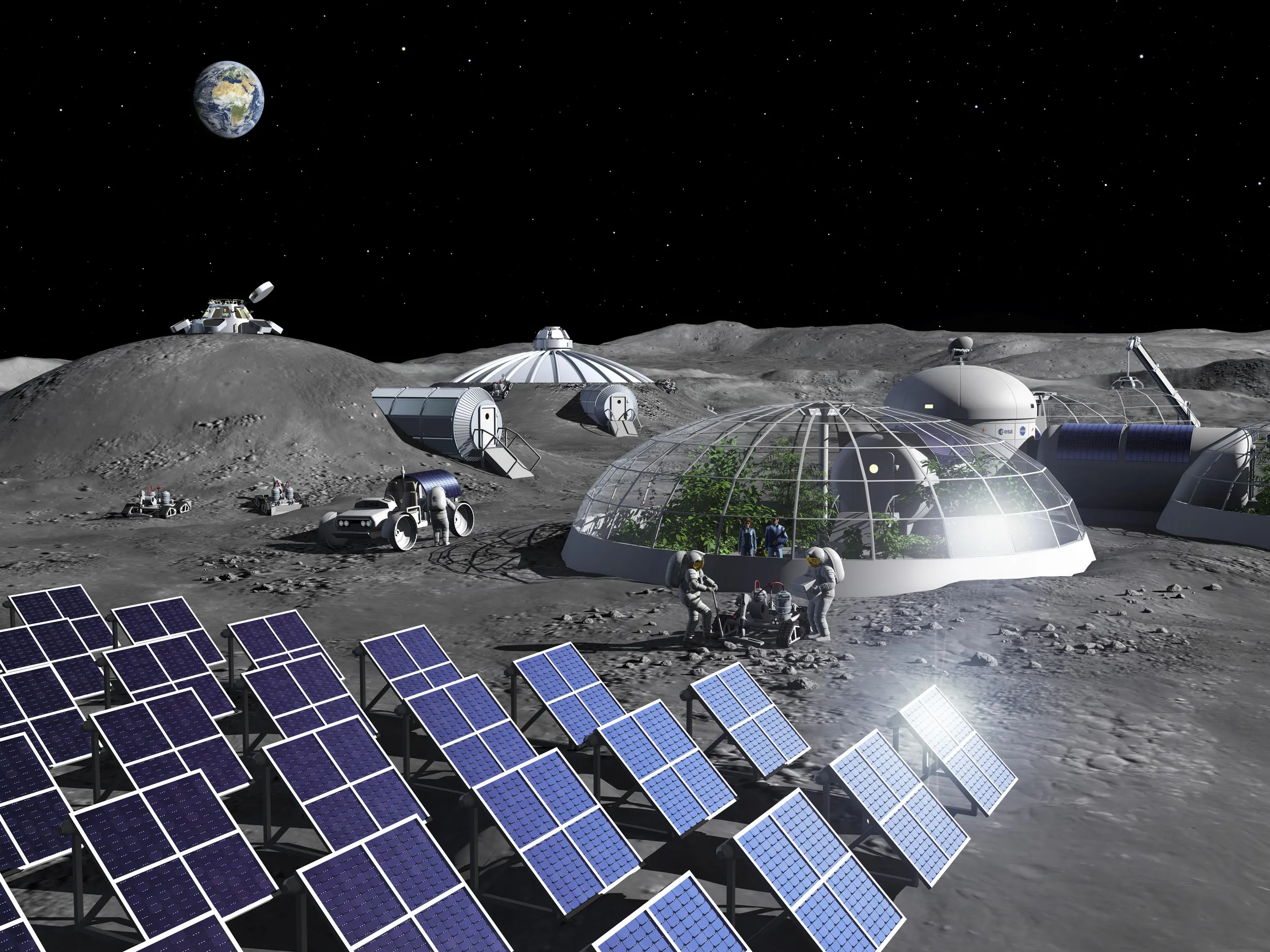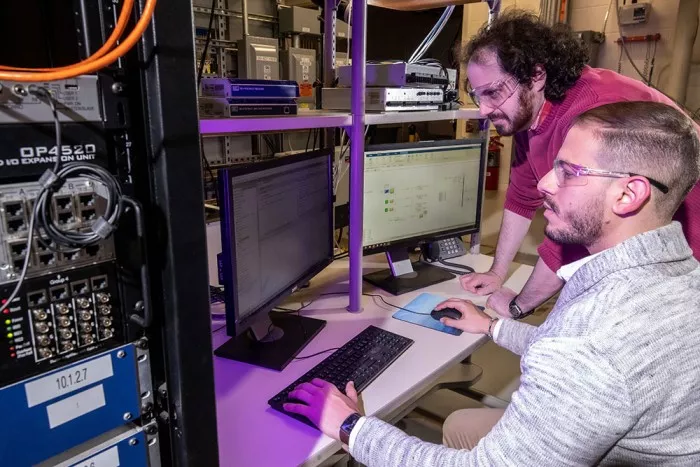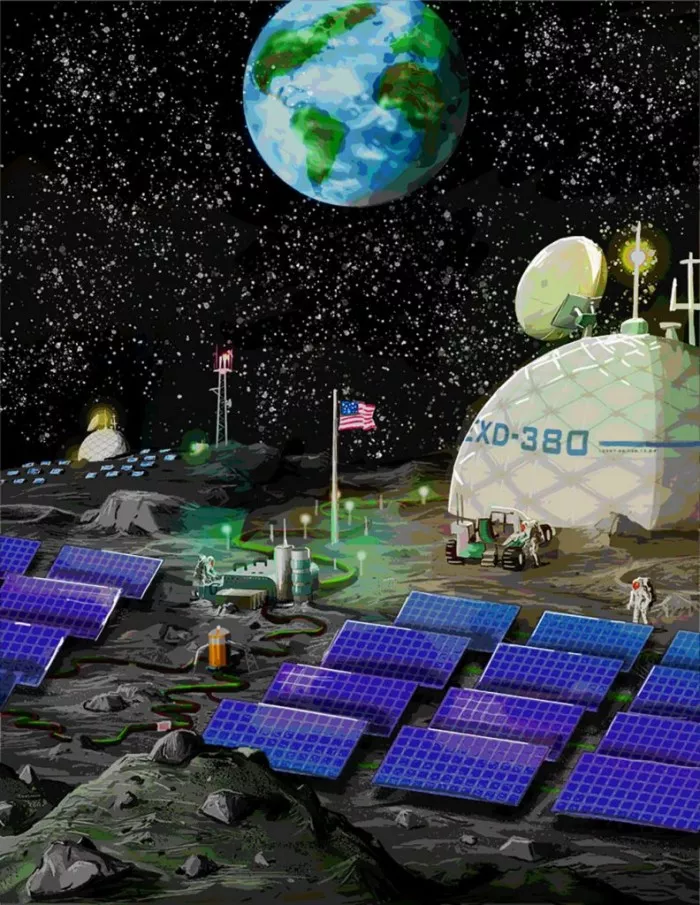The next time man lands on the moon, they plan to stay for a while. For the Artemis program, NASA and its partners hope to build a sustainable lunar base on the moon, including a base where astronauts can live and work. One of the key factors for a functioning lunar base is the power supply. Sandia National Laboratory, a research and development laboratory dedicated to building microgrids for military bases, is [cooperating] with NASA( https://www.sandia.gov/labnews/2022/05/05/powering-the-moon-sandia-researchers-design-microgrid-for-future-lunar-base/ ) , design a microgrid that can be used on the moon**

The lunar base is expected to become a technological testing ground for humans to venture into further space - for example, to Mars. Therefore, the grid will not only maintain light and air circulation, but also support mining and fuel processing facilities, which will work simultaneously to reduce supply demand from the earth.
Of course, there are some differences between designing a microgrid for a lunar base and similar settings for use on earth. Rachid darbali Zamora, an electrical engineer at Sandia National Laboratory, said it is worth noting that it will need to maintain the lives of astronauts, not just support traditional household loads. To this end, energy storage and power management will be crucial.
The lunar habitat will include a living unit and a mining and processing center that will produce water, oxygen, rocket fuel, etc. Therefore, engineers at Sandia National Laboratory are studying two DC microgrids and connecting them with a connecting line.
Lee rashkin, another electrical engineer at Sandia, said they were trying to determine the parameters of the connecting line. "We are considering a higher voltage [than two load centers] because [they] have to span a few kilometers," he said He added that it would be easier to push power at a higher voltage because it requires less current to make it easier.

Rashkin said the residential unit will be about the size of the international space station, while the mining and processing center will be slightly larger, with a distance of about 10 kilometers between them. Although these two systems will be designed to be self-sufficient, "the existence of connecting lines is mainly for redundancy". "If an accident happens to one of the (photovoltaic) generators in the habitat, it can input electricity to maintain these loads, which is crucial to maintaining people's lives," he said
Darbali Zamora added that each system will also have its own redundancy, rerouting and reconfiguration capabilities. "Therefore, if a line in the lunar habitat serves a critical load and the line fails, there is a mechanism to redistribute power to receive it from one source."
As part of the planned lunar base will be distributed on the lunar surface, engineers also expect a large number of power electronic equipment and distributed energy resources. "Power electronics technology is essentially a gearbox. Just as a gearbox can switch from one speed and torque value to another, power electronics technology can switch from one power and voltage level to another. These power electronics converters will be the key to managing the power between the battery or solar panel and the main bus," rashkin said
The main energy will be solar energy, supplemented by batteries. Unlike the earth, there are no clouds on the moon, which means that the lunar surface receives more direct sunlight. Darbali Zamora believes this is an advantage in some ways, but they must take into account that the moon's night is about two earth weeks.
Darbali Zamora says there are some energy storage options, depending on what kind of battery material or chemical composition they want. "But our idea is that when there is more solar power generation and load demand, solar panels will charge the batteries," he said. "Part of what we are doing is defining management controls to ensure that the battery is not completely depleted and that there is synergy between solar panel power generation, load consumption and battery charge and discharge."

To do this, engineers have time scale based controls -- from devices running at sub millisecond speeds to devices in days -- to plan the state of charge needed at any time. "One of the limitations on the level of control is that the energy storage device needs to be fully charged when the sun disappears," rashkin added
All tests and adjustments will be carried out on the Sandia secure scalable microgrid test bench in Albuquerque. "We have all the simulation capabilities planned for the lunar base. The test platform can be used to build a representative of a scaled down lunar microgrid and to study power system controllers, energy storage, power electronics and distributed energy. We are planning to use it for a large number of control design analysis," rashkin said
Once they have control, rashkin's team will hand it over to darbali Zamora's team for testing at Sandia's distributed energy technology laboratory. With the power hardware in the loop capability, they can test physical equipment in a simulated environment, such as the controller built by rashkin team, such as the lunar base simulator. "We can even simulate two separate systems -- for example, simulating lunar habitat in one simulator, mining and production in another simulator, and connecting lines or converters that make up this connecting line," darbali Zamora said
There is still some way to go before their work finally appears on the moon, but both engineers point out that the work they are doing is not completely decoupled from what they are doing on land. "We hope that many of the solutions we found in this project can be implemented on earth" to build better and more resilient systems, darbali Zamora said.